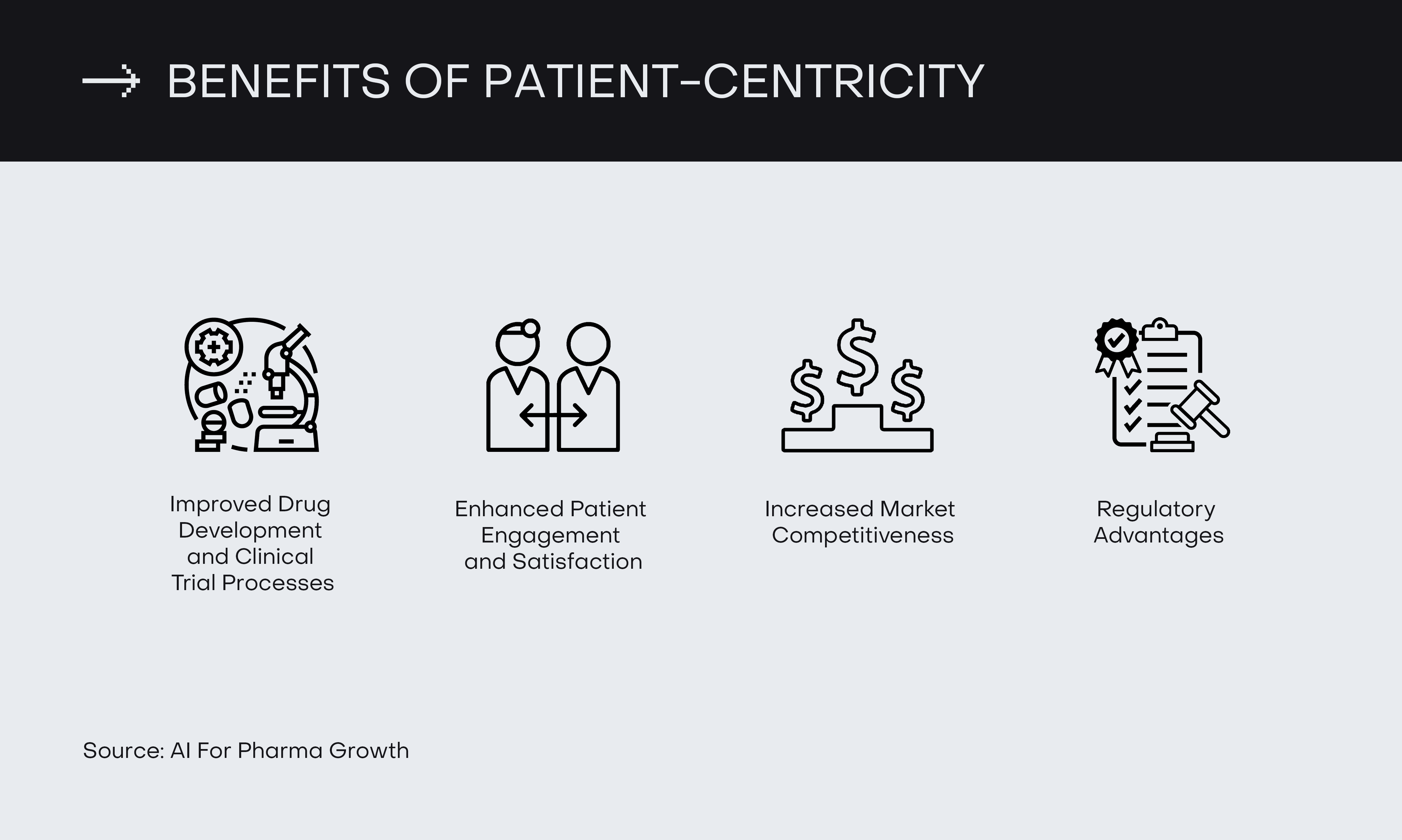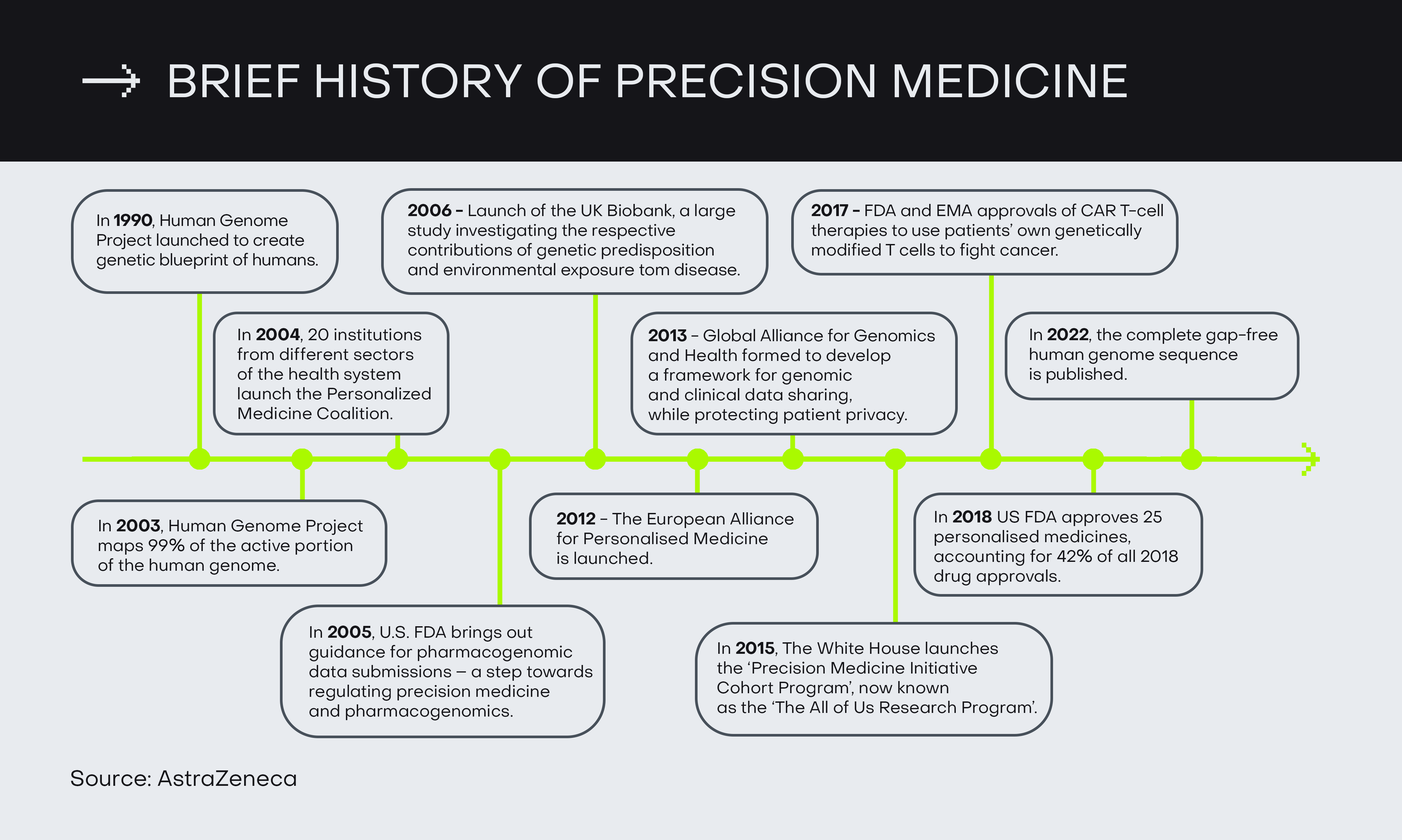Patient-Centric Systems: The Future of Health Tech in 2024
A rare user hasn’t made or heard a joke about how social media algorithms know us a little too well. With the overpowering, almost magical-feeling personalization that we experience on the web, it seems like the world has truly entered the era of human-centric digital transformation. However, the main interaction with this phenomenon most users will have will be through their suggested feed and a carefully curated selection of ads. What if it could serve something bigger? What if personalization and human-centricity hold the potential to save lives?
Today we will talk about one of the biggest up-and-coming trends of modern medicine: patient-centric systems. The type of demand that drives them, the digital changes they usher in, and their general purpose are all elements of the bigger picture that shows where the post-COVID healthcare industry is headed. To see this future more clearly, we need to start in the present.
CURRENT STATE OF DIGITAL HEALTHCARE
According to Statista, world Health Tech revenue is expected to show an annual growth rate of 9.16% between 2024 and 2028, resulting in a projected market volume of US$275.00bn by 2028. Such rapid growth makes it clear that the digital healthcare industry is moving fast, but where is it going? Rajan Kohli of India Times demystifies the direction of Health Tech evolution with five focal points.
- Inter-connected Healthcare Ecosystem. This is the metaverse of medicine; an interconnected database of patient data from doctors, hospitals, and insurers. The creation of such vast digital infrastructure will require safe data-sharing solutions and a collective readiness of healthcare professionals to modernize their processes, but the outcome will contribute to fuller understanding of various conditions, and better treatments will follow suit.
- Rise of Virtual Consultation. During COVID-19, the popularity of remote doctor visits has skyrocketed, and stayed high for good reasons. Online consultations are faster and more comfortable, especially for patients whose conditions affect their mobility. With the modern healthcare going through a crisis, digital hospitals might be the next big effort to diminish the overall strain on the system.
- Expediting Drug Development. India Times describe AI’s ability to “predict, simulate, and experiment with potential drug behavior at a rapid pace”, using the example of the COVID-19 pandemic, where the vaccine was found in under a year. This has set a powerful precedent for accelerated drug development, which is sure to grant us with more medical breakthroughs in the future.
- Scaling up Digital Transformation. This refers to the overall increased investment in cloud, automation, and AI, as tools of medical progress.
- Personalizing care. Modern-day internet is rife with algorithms that tailor each user’s selection of ads, video and music suggestions. Individual digital approach to every person online is already here; the healthcare industry just needs to learn to reap its benefits. Personalized care that centers the patients’ unique experiences will be the topic that we will see more of in 2024, and explore in more detail today.

PATIENT-CENTRIC APPROACH IN HEALTHTECH
More than two thousand years ago, the famed ancient Greek doctor Hippocrates has said: “we need to treat the patient and not the disease the patient has”. In 2024, doctors are ready to heed his wisdom. As the healthcare industry evolves in stride with modern technology, access to a broader scope of data not only accelerates medical breakthroughs, but becomes fruitful soil for personalized experiences. It seems like the medical field finally has enough information to distinguish the vibrant individual portraits of patients who suffer from the same ailments, and see that no two cases are ever alike.
Depersonalization of care has been a powerful drawback of digital healthcare, with various devices and remote consultations as tools that widen the gap between patients and doctors. Patient-centric is a response to that disconnect. This type of digital healthcare considers each patient’s needs, preferences, and experiences. By integrating patient-reported expectations and outcomes into care processes, human-centric digital healthcare:
- facilitates more personalized treatment plans;
- improves adherence to medical recommendations;
- and enhances overall patient satisfaction and quality of life.
Ultimately, human-centric digital healthcare endeavors to harmonize technological advancements with compassionate, patient-centered care, ensuring that technology serves as a catalyst for enhancing human well-being rather than a barrier. SCP Health notes how in some cases technology could lead to “a more impersonal and fragmented patient experience“. The writing is on the wall; the industry is moving beyond digitization of medical records and online consultations. It seems like 2024 will be about providing empathetic and empowering care.

Unique Health IDs - The Backbone
Personalization of Health Tech would be impossible, if we couldn’t reflect the uniqueness of each patient in the digital form. Unique Health IDs, also known as Universal Health Identifiers (UHIDs) or Personal Health Identifiers (PHIDs), are codes assigned to individuals to create a standardized identification system of diverse medical records and overall health information. Integration of these records across various healthcare providers adds up to what is known as an Electronic Health Record (EHR). This unified approach enhances patient safety, reduces duplicate records, and improves the quality and efficiency of healthcare delivery. Today, Unique Health IDs become the building blocks of patient-centric medical systems. They bring us closer to personalized healthcare through:
- technological patient empowerment;
- seamless data access;
- efficient care coordination;
- personalized care plans;
- research facilitation;
- population health management;
- public health surveillance;
- regulatory compliance;
- accurate identification and tracking.
Patient-Centric Healthcare Apps – The Product
Now that patient-centricity has been defined, how can we bring it closer to its subjects – the patients themselves? The answer lies in patient-centric applications. This umbrella term covers a wide spectrum of digital tools, designed to prioritize and enhance the patient’s experience, engagement, and empowerment within the medical ecosystem. As people all over the world experience the feeling of being abandoned by the healthcare industry, such apps, and the agency that they return to their users, are likely to become even more popular moving forward.

Patient-centric healthcare apps can be internet-based, television-based, or mobile. They often feature appointment scheduling, medication reminders, symptom tracking, and access to electronic health records. They may incorporate telemedicine capabilities, virtual consultations, secure messaging with healthcare providers, and personalized health education resources tailored to individual needs and preferences. JAMIA report brings up the example of the home asthma telemonitoring system, which “provides patients with continuous individualized help in the daily routine of asthma self-care”. The same report zeroes in on the mobile apps, marking how the most frequent conditions that they address and help to deal with are asthma, diabetes, and chronic obstructive pulmonary disease.
Precision Medicine – The Long-Term Mission
Precision medicine represents a paradigm shift in healthcare that emphasizes the customization of medical treatment and preventive strategies based on individual variability in genes, environment, and lifestyle. This transformative approach diverges from the traditional one-size-fits-all model to “optimize the patient’s quality of life and chances of survival by getting the treatment plan right from the get-go“.

According to a CVS Health Care Insights Study, 83% of consumers want their primary physicians to know their family medical background, genetics and lifestyle. Despite this overwhelming demand for personalized experiences, blindness to the patient’s personal agency remains a relevant problem. Precision medicine tackles this very problem by fostering a more proactive approach to disease prevention, empowering healthcare providers with actionable insights to tailor recommendations based on individual patients’ distinct biological characteristics and risk profiles. Although challenges related to data privacy, scalability, and equitable access persist, precision medicine holds significant promise in revolutionizing healthcare.
AI AND PATIENT-CENTRIC TECHNOLOGY
Artificial Intelligence has been a powerful tool in the Health Tech toolbox for years, but 2023 has really blown the topic of generative AI wide open. Today, AI is used to optimize most technologies, including Health Tech, where it can become a powerful tool of personalization. Through advanced machine learning algorithms and data analytics, it enables healthcare providers to analyze vast amounts of patient data. More specific benefits of using AI for patient-centric approach are:
- Medical imaging. AI can accelerate early-stage disease detection by analyzing computed tomography (CT) scans, X-rays and magnetic resonance imaging (MRI).
- Surgery. AI-powered robots lend the operation rooms the precision and control humans cannot achieve on their own, and AI-powered platforms can help surgeons analyze the previous procedures.
- Medical research and data analysis. AI can accelerate medical research, analyzing vast volumes of data faster than a group of human scientists.
- Drug development. Building off of fast data analysis, AI can “predict drug’s efficacy and its potential side effects“.
- Early detection of fatal blood diseases and cancers. AI’ s ability to make out subtle cell changes makes it great at catching potentially life-threatening illnesses.
- Remote patient care. This includes telemedicine, remote consultations, and wearable devices that automatically respond to the patient’s body changes.
- Fraud detection. Sensitivity to deviation from preprogrammed patterns helps AI to notice suspicious documents in the medical system.
- AI assisted gene editing in treatment design. This technology of zinc-finger (ZF) editing is in its early stages, but it shows potential for rewriting the errors in DNA letters that sickle cell anemia, cystic fibrosis and Tay-Sachs disease.

CONCLUSION
The shift towards patient-centric healthcare systems that are driven by the combination of human empathy and AI technology hints at a bright medical future, where the scientific advancements go hand-in-hand with deep consideration of each patient’s experience. It remains to be seen whether the healthcare industry is ready to face the growing pains of such digital evolution on the large scale for the benefit of its clients. After 2023’s boom of AI, 2024 will show just how fast the promise of AI-powered human-centric medicine will come to life.
Stick around to keep your hand on the pulse of innovation. Innovecs offers a wide selection of tech support and software development services, including the implementation of machine learning and artificial intelligence algorithms. Feel free to reach out to us, if your company is undergoing its own digital transformation. We’re certain we can optimize your processes with innovative technology.